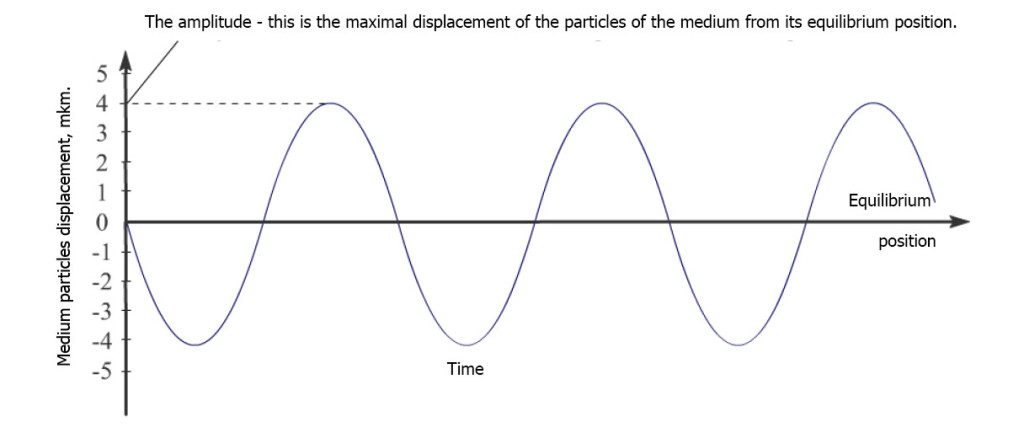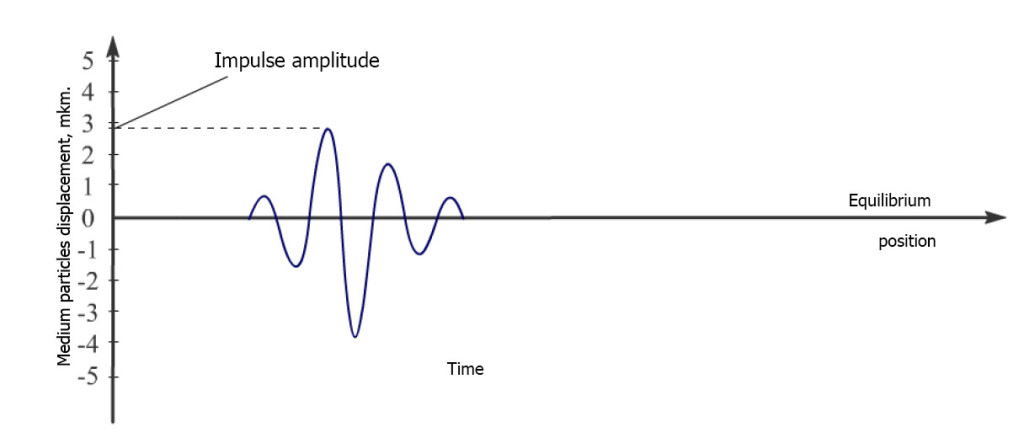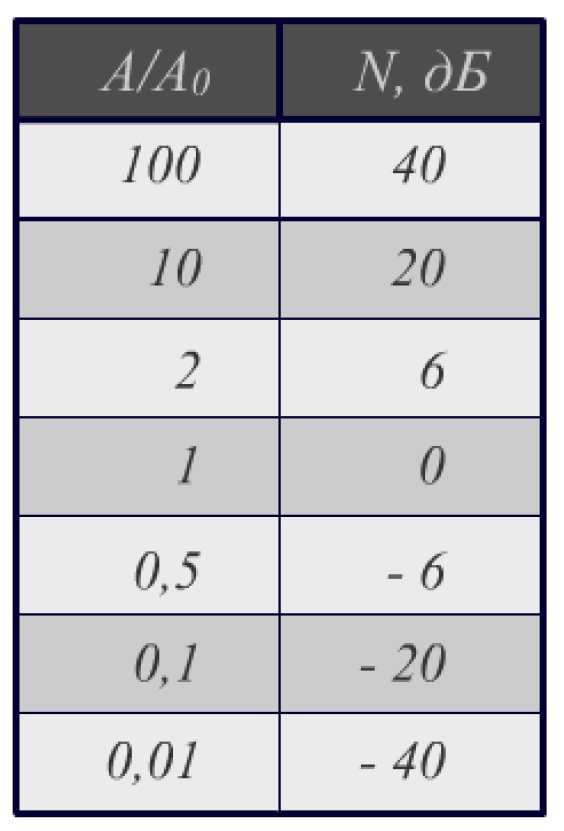BASICS OF ACOUSTICS: Wavelength & The amplitude of the wave
1.5 Wavelength
Acoustic waves are periodic in space, and the spatial period of the wave is called the wavelength. Wavelength – is the minimal distance between the particles of the medium, which varies in phase (simultaneously, synchronously) (Figure 1.4), is denoted by λ, and m is measured in mm.
Parameters of the wave interaction with inhomogeneity of the medium (gaps, the structure of the material) depend on the wavelength. Wave interacts weakly (“skirts”) defects whose sizes are significantly smaller, than the wavelength. The wavelength depends on the frequency and wave propagation speed:
1.6 The amplitude of the wave
The amplitude of the wave – is the maximal displacement of the particles of the medium from its equilibrium position. The continuous fluctuations in the amplitude of each subsequent oscillation is equal to the previous one. Figure 1.6 shows the continuous oscillation with an amplitude of 4 mkm.

Fig. 1.6 – Continuous oscillations with amplitude of 4 mm
The pulse oscillation amplitude changes over time, and the pulse amplitude is called maximal oscillation amplitude. Figure 1.7 shows the pulse oscillation with an amplitude of 2.8 microns.
In nondestructive testing the amplitude of the acoustic pulse is one of the basic values, which influence the decision to reject the product . The absolute value of the amplitude pulse in practice is not applicable, since this value depends not only on the characteristics of the defect, but also on extraneous factors: the state of the input surface of the ultrasonic waves, the distance to the fault, control acoustic properties of the material of the object. Therefore, the basis for the ultrasonic inspection method is the necessary comparing of the reflected from defect impulse amplitude with the reflected from the reference sample impulse amplitude.

Fig. 1.7 – The pulse oscillation with an amplitude of 2.8 mm
Figure 1.8 shows the acoustic pulses reflected from the defect and the reference reflector with amplitudes and Aeo AD, respectively. The amplitude ratio = 0.5 deo directly characterizes the reflectivity of the defect, and ceteris paribus – the size of the defect.

Fig. 1.8 – The pulse oscillation with of 2,8 mkm amplitude
Amplitudes ratio, detection coefficient, amplification coefficient, conventional sensitivity, generally measured in relative logarithmic units – decibels (db):

where A – amplitude of the pulse, A0 – the amplitude of the reference pulse, Lg () – logarithm.
The use of dB units significantly simplifies calculations in the ultrasonic flaw detection: Signs “·” and “/” are replaced by “+” and “-“, respectively.
Table 1.1 shows the relation between relative units and dB.
Table 1.1 – Values of N pulse amplitudes in dB and the corresponding values of relative amplitude of A / A0



 +38 067 593 59 77
+38 067 593 59 77
